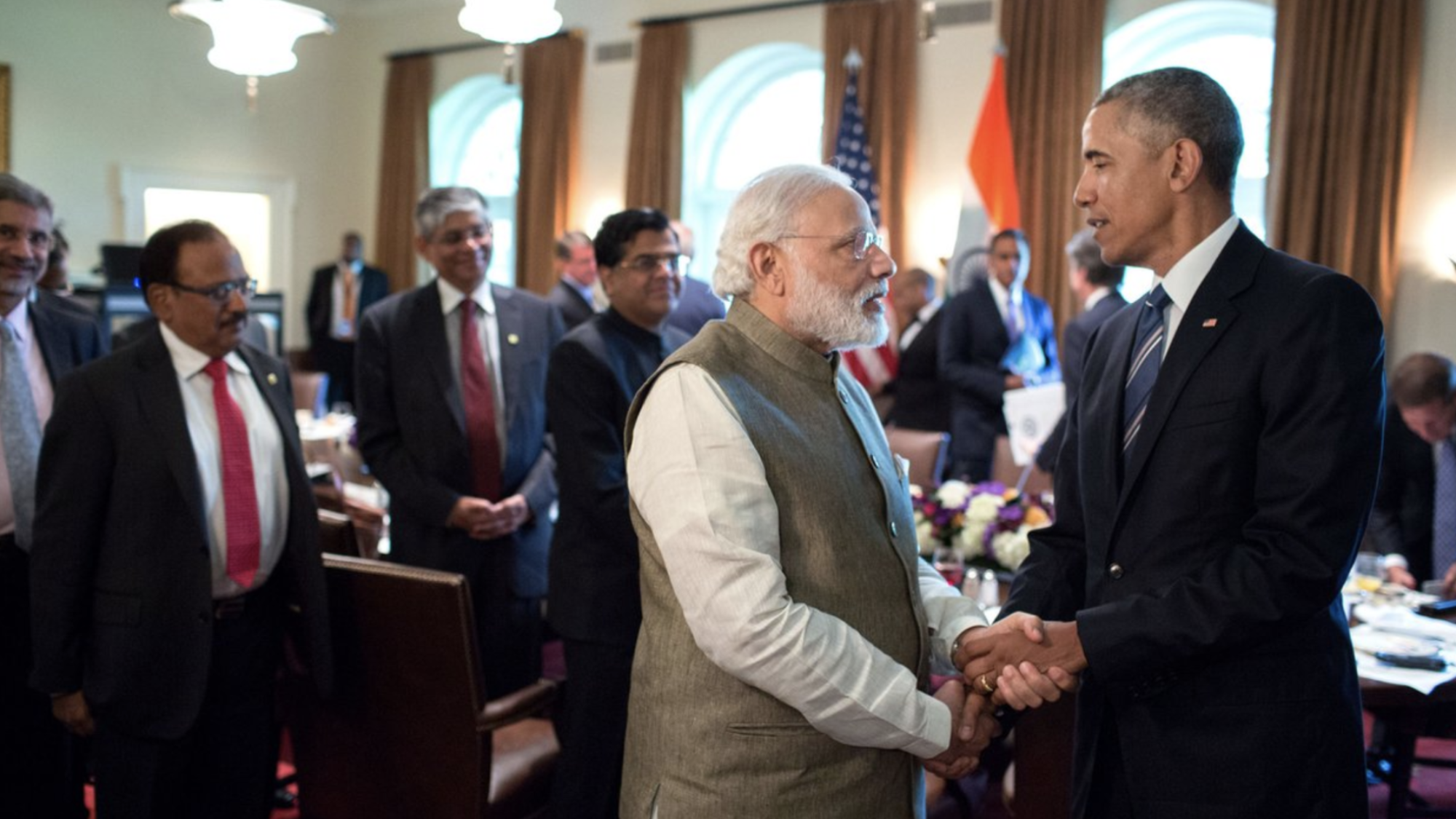
Title: Indo-U.S. Relations: Mapping the Contours
The current state of India-U.S. relations marks a complete turnaround of the diplomatic stalemate that marked the two countries’ relationship during the Cold War. A quintessential example of this strategic transformation can be found through India’s quest to build an aircraft carrier. The United States has come a long way from its 1971 decision to send the USS Enterprise to the Bay of Bengal to deter India. In 2015, the United States began cooperating with India to build a carrier at Kochi port.
India-U.S. relations have made significant strides in the post-Cold War era, leaving the infamous tag of “estranged democracies” behind. In fact, the two countries have premised their strong bonds upon the strength of their traditions as the oldest and largest democracies in the world. As governance structures, education, awareness and governments themselves have evolved in both countries, there is even more that has come under the ambit of “common values” shared between the United States and India. Importantly, these shifts have also coincided with changing contours of the international order since the end of the Cold War. This marks one of the most important changes concerning India-U.S. relations: one that seeks to balance shifting global power centers with a stable world order essentially determined by a new balance of power. As Asia transitions into the strongest continent, there is a new power scramble that seeks to upend the world’s traditional understanding of state alliances and partnerships. As the scramble continues, both India and the United States are developing new rules and goals.
From energy and education to the military and geopolitics, both India and the United States now have a convincing rationale to engage with each other as “strategic partners”. The defense sector partnerships between the two countries have emerged as one of the strongest pillars of U.S.-India ties. With a seminal agreement signed in 2005 and subsequently renewed in 2015, this defense partnership has formed the bedrock of bilateral exchanges. Furthermore, technology transfer along with partnership enhancers like co-production and co-development of new technologies under the Defense Trade and Technology Initiative (DTTI) have propelled this relationship to a new level.
With the advent of Trump administration, a great degree of unpredictability in India-U.S. relations has ensued, particularly in the strategic domain. However, cutting through the cloud of uncertainty, the Trump administration seems to be gradually adopting clear positions on security and strategic concerns in South Asia. Although the Trump administration took close to eight months to outline a stated South Asian policy, it managed to dispel some traditional U.S. foreign policy clichés, especially in the light of altered security scenario and commensurate threat perceptions in South Asia. As such, the Trump administration stands in contrast with both the Bush and Obama Presidencies, which each took definitive steps to boslter India-U.S. ties. While the Bush administration witnessed India become a partner in defense and counter-terrorism cooperation along with the initiation of nuclear talks, the Obama administration proved decisive in ending the nuclear apartheid of India.
The Trump administration’s firmer stances against Pakistan and its exhortation to India to play a larger role in Afghan security is a new change in United States’ South Asia policy. Despite Pakistan’s lack of conviction, the Trump administration has continued the previous administration’s push to project India as a net security provider in South Asia and the Indian Ocean. Projecting India as an emerging champion of security in Asia has some notable consequences. First, in one stroke the United States will have a credible security partner in Asia that can theoretically and pragmatically counter-balance China’s rise and hence create a perceived deterrent in the Asian theater. Second, India’s proximity to the United States creates an Asian deterrent to Pakistan’s rapidly growing strategic arsenal, which carries the risk of falling into terrorist possession. Third, the United States only stands to gain from the prospect of “burden-sharing” in Afghanistan through India’s predominant influence in the region. In the past, India has repeatedly turned down Afghanistan’s request for supply of military equipment. However, India continues to exercise tremendous soft power in that country. To that extent, any augmentation of efforts by India will only benefit United States. Lastly, the trajectory of India-U.S. relations since 2005 has created unprecedented scope for the strongest strategic partnership of the United States in Asia, riding on rising defense imports, increased technology sharing and the growing sophistication of their bilateral defense exercises. India presents a unique model for U.S. partnership in Asia, particularly through its tag of “Major Defense Partner,” which some say creates a new strategic space between a friend and an ally for the United States.
India and the United States share a host of common interests in shaping the emerging geopolitics of Asia, especially those interests that lie in the Asian maritime domain. As Asian waters have emerged as a contested domain between rising and established powers, India needs to carefully calibrate its proximity with the United States in advancing its core interests, as opposed to being carried too far. India still holds its strategic autonomy dear despite forging strong ties with the United States. There are quite a few issues on which the United States and India are at loggerheads in the WTO and remain opposed to each other’s views. Besides, the United States remains a major contributor of aid to Pakistan despite some cuts. These issues depict the sui generis nature of bilateral relations between India and the United States where cooperation overlaps difference. The hope, however, lies in shrinking these differences.
. . .
Ankita Gothwal is a Doctoral candidate in the Centre for Canadian, US & Latin American Studies, School of International Relations, Jawaharlal Nehru University (JNU), New Delhi. Her areas of interest include probing US-India relations, US domestic politics and society, cultural transition and identity loss among Indian immigrants in the US. Prior to this she has completed her M.Phil in International Relations with specialization in American Studies from JNU.